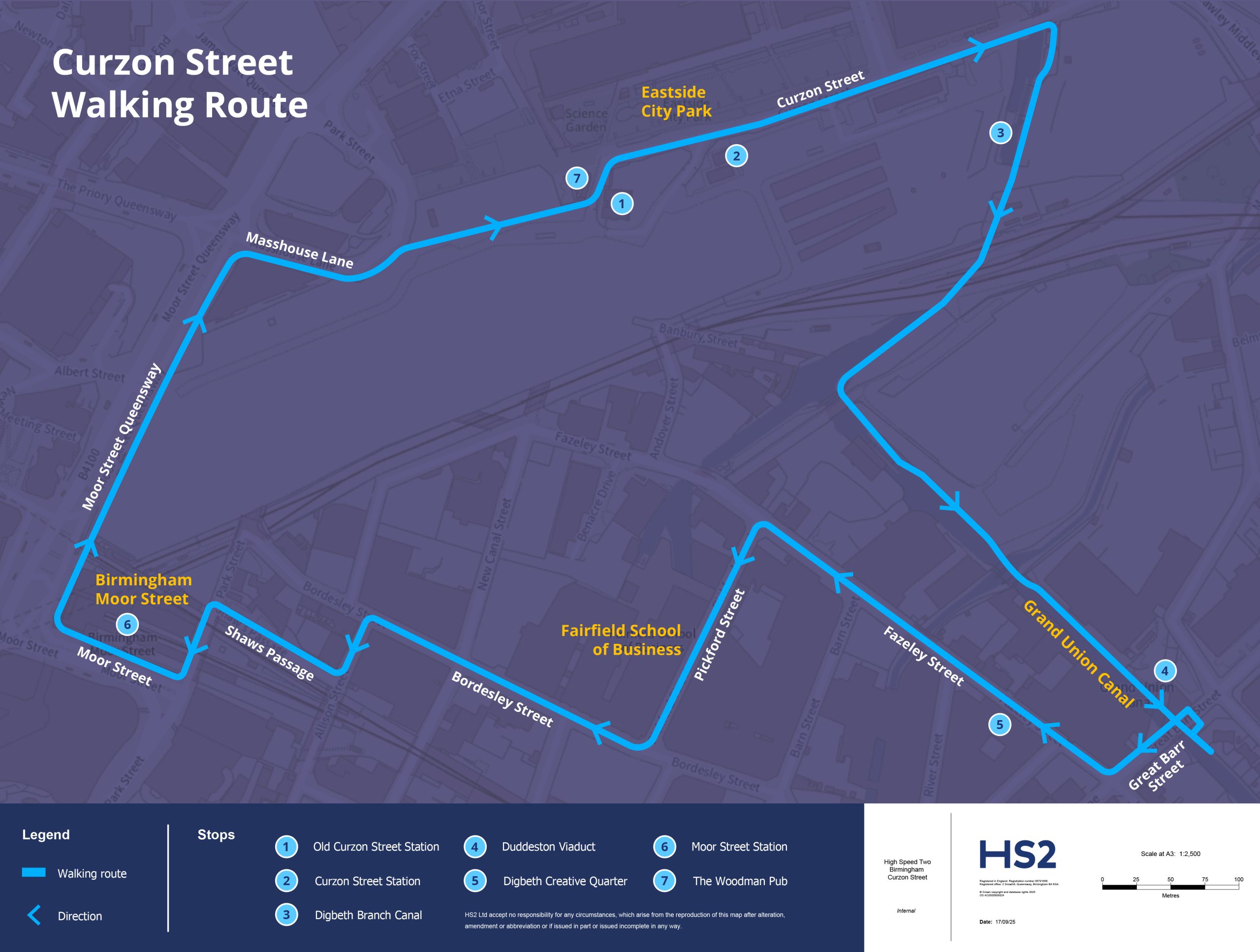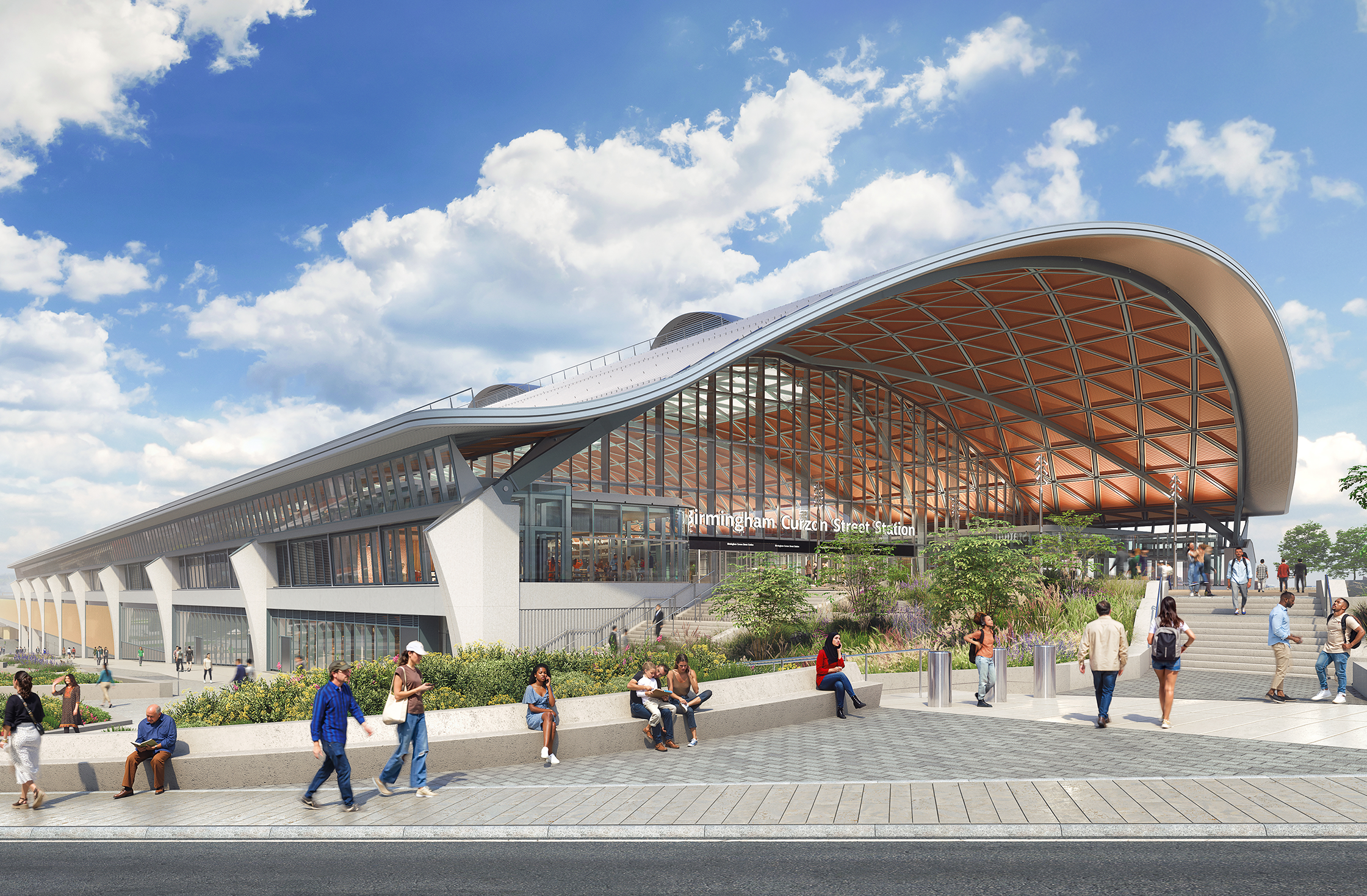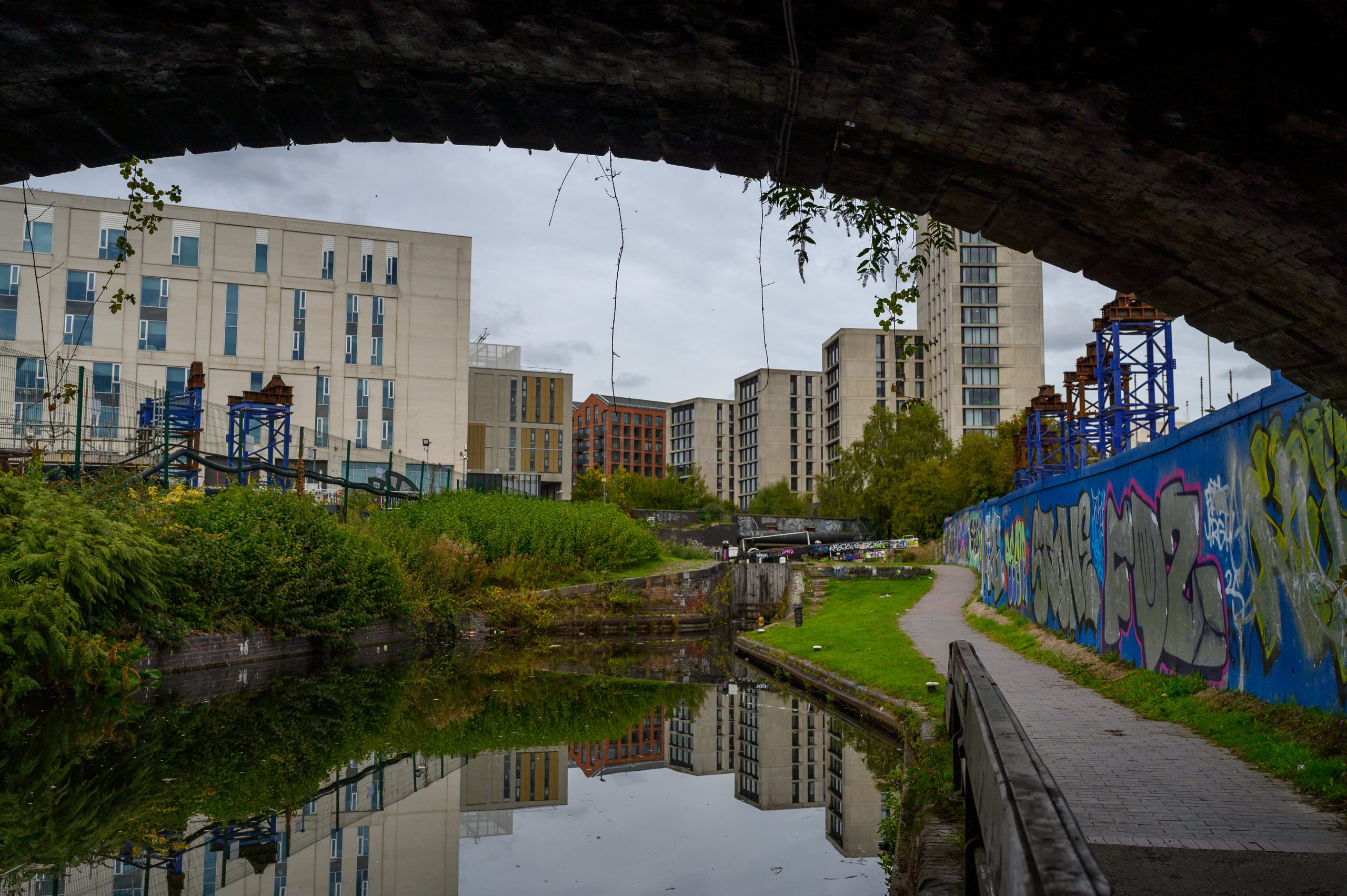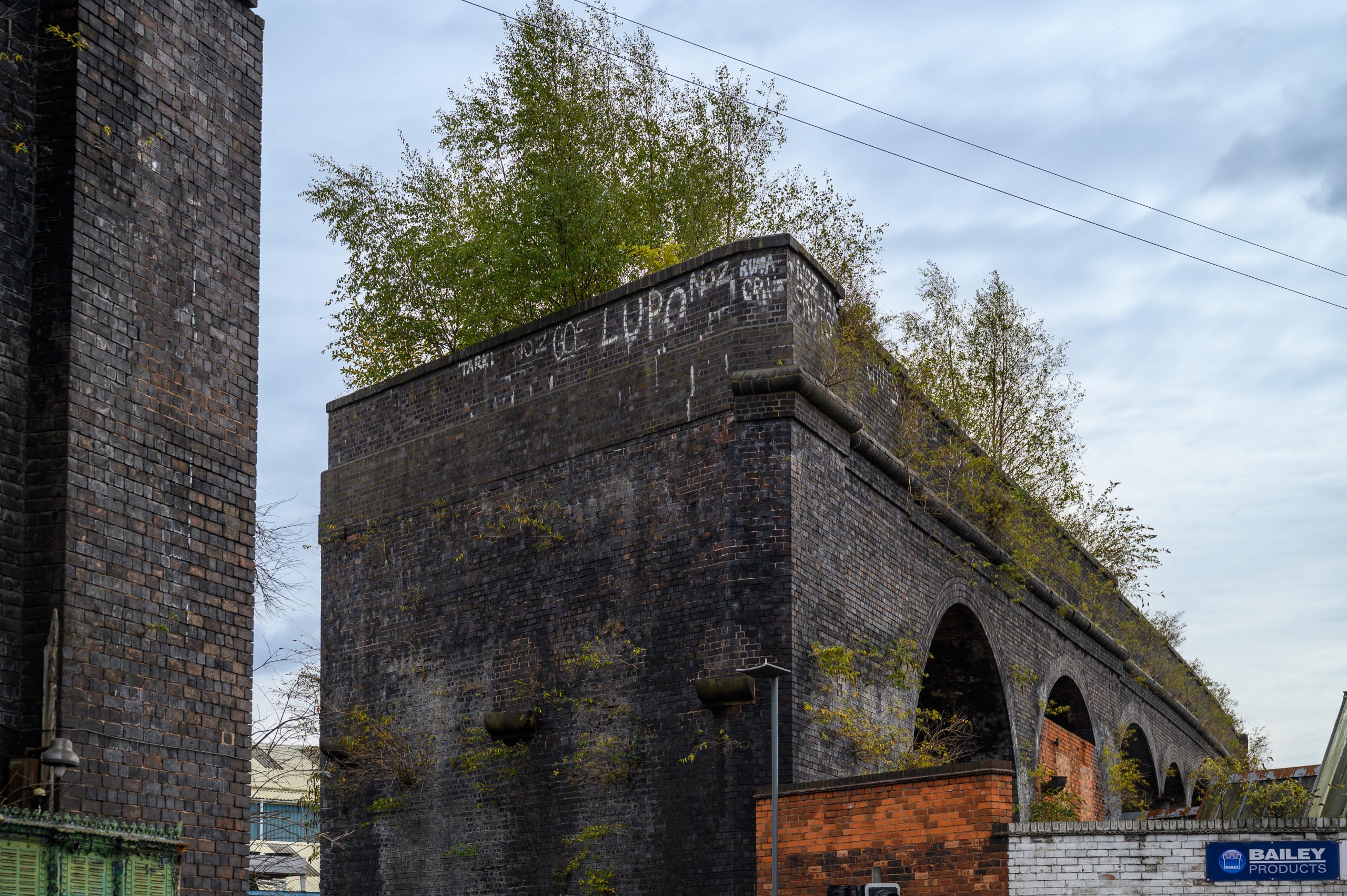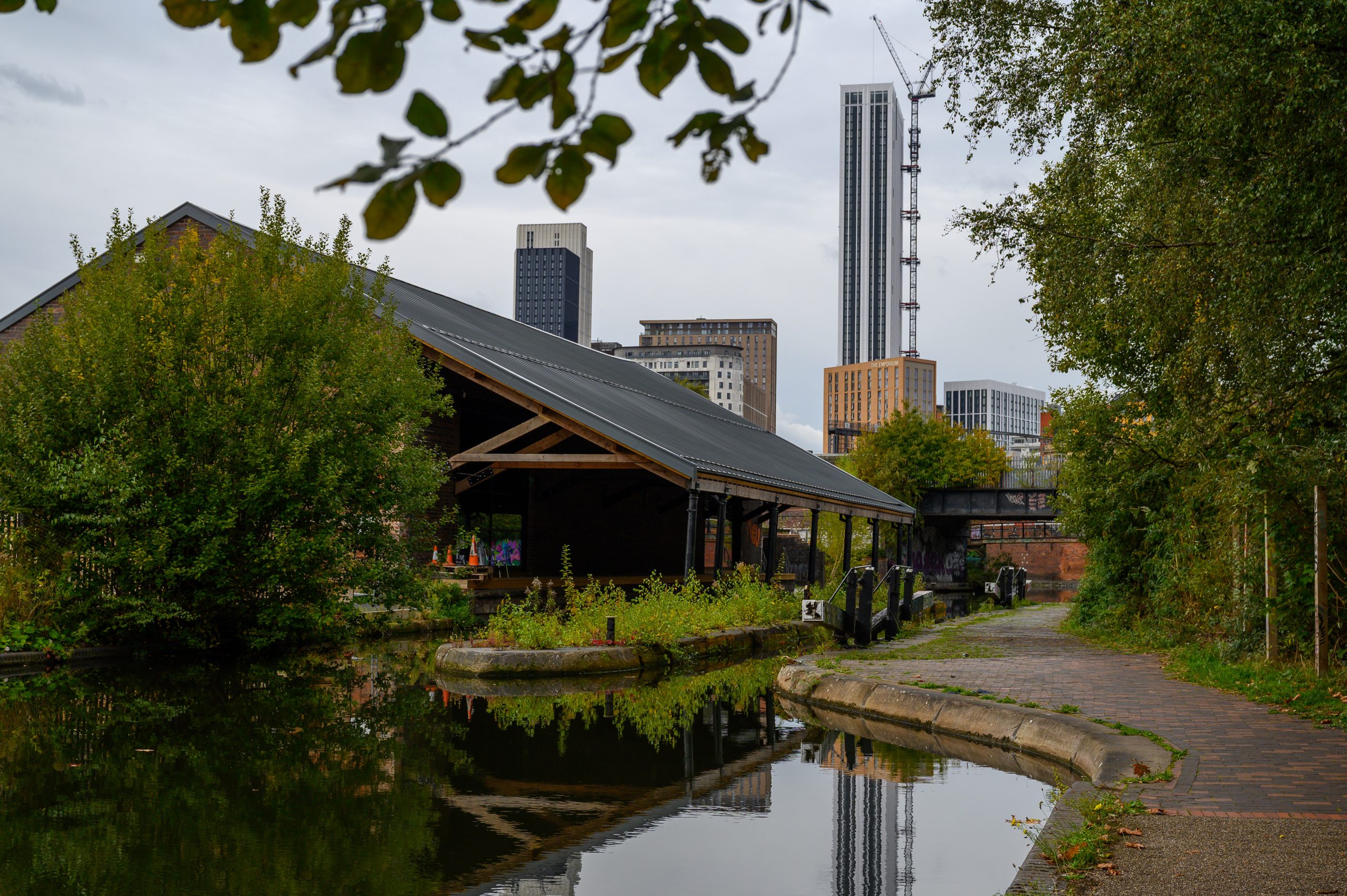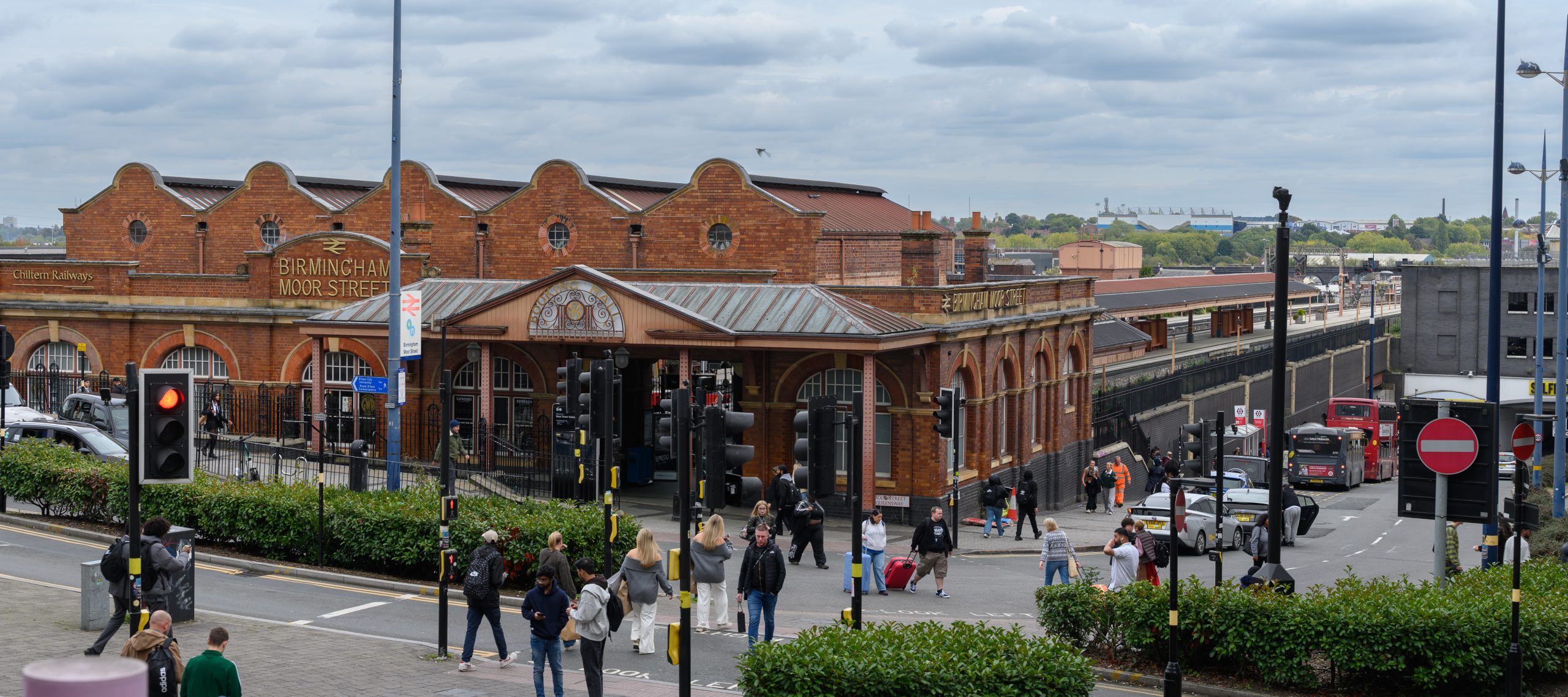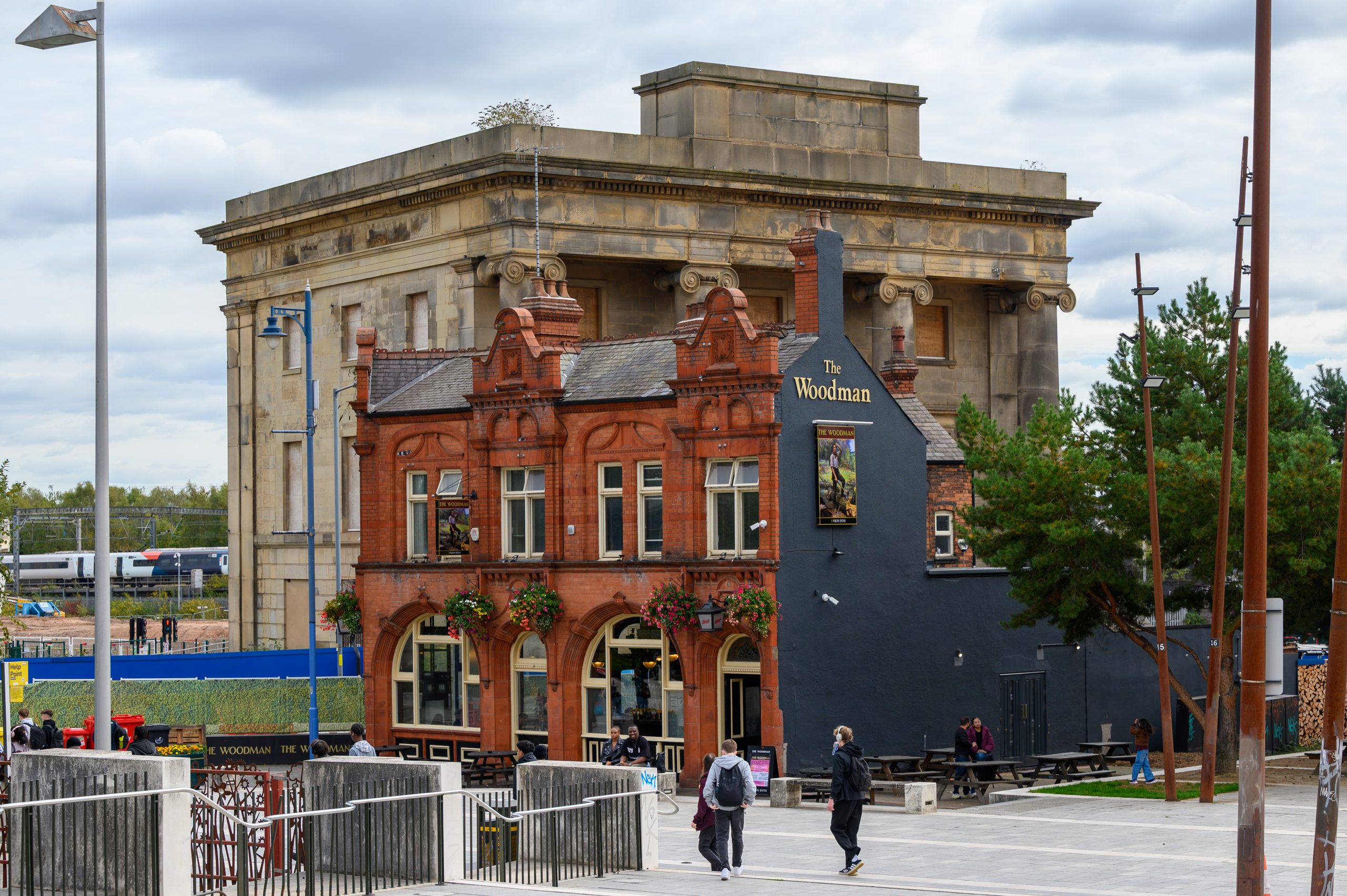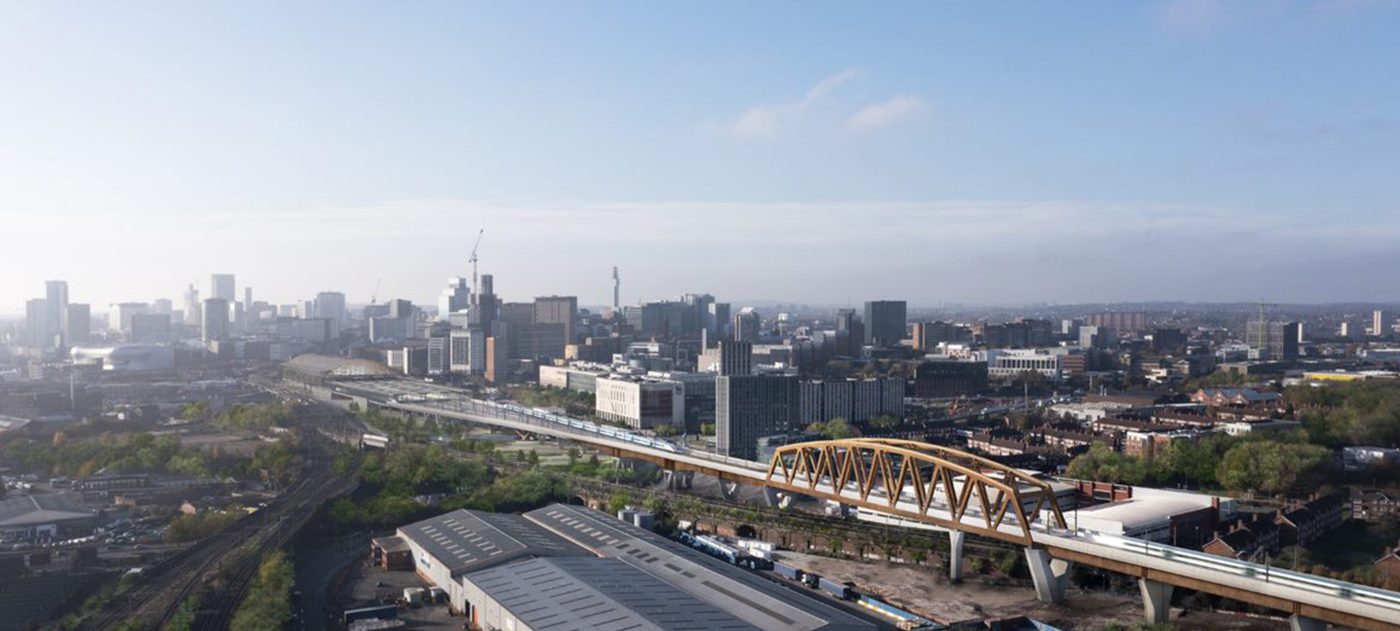
Explore Birmingham Curzon Street: A self-guided walking tour
HS2 is helping to transform Birmingham, regenerate Digbeth and breathe new life into the area around Curzon Street – once home to Britain’s first intercity railway station, now the site of its newest, high speed terminus.
This isn’t the first time the city has evolved. This self-guided walking tour of Digbeth opens up Birmingham’s past – through its historic landmarks, canals, railway stations and industrial heritage – to explore how transport infrastructure has shaped the city.
Trains, cranes and canal boats
The opening of Birmingham Curzon Street Station in 1838 cemented the city’s place at the heart of the UK transport network. The station’s rebirth as a new high speed terminus signals a wider resurgence, as investment steams into Digbeth and the surrounding area.
This self-guided walking tour will take you on a journey from Victorian Birmingham to modern-day Brum. You’ll delve into the city’s past as a powerhouse of the industrial revolution, explore how evolving transport infrastructure has shaped our streets, and learn how continued investment – driven by HS2 – is growing the city’s skyline.
Practical information
- Total distance: 2 miles
- Conditions: Step-free and mostly flat, with some uneven footpaths.
- Equipment: Sturdy footwear and weather-appropriate clothing advised. Torch may be advisable on canal path.
- Hazards: Pedestrians and vehicle traffic throughout. Take extra care in tunnels and along waterways and follow the Towpath Code.
Disclaimer
This walking route is provided by HS2 for information purposes only. Individuals choosing to follow this route do so entirely at their own risk.
HS2 accepts no responsibility or liability for any loss, damage, injury, or incident that may occur to individuals or their property while undertaking this walk. By using this route, you acknowledge and agree that you are solely responsible for your own safety and that of any companions.
We recommend exercising caution, wearing suitable footwear, and taking all reasonable safety measures when undertaking this walking tour.
